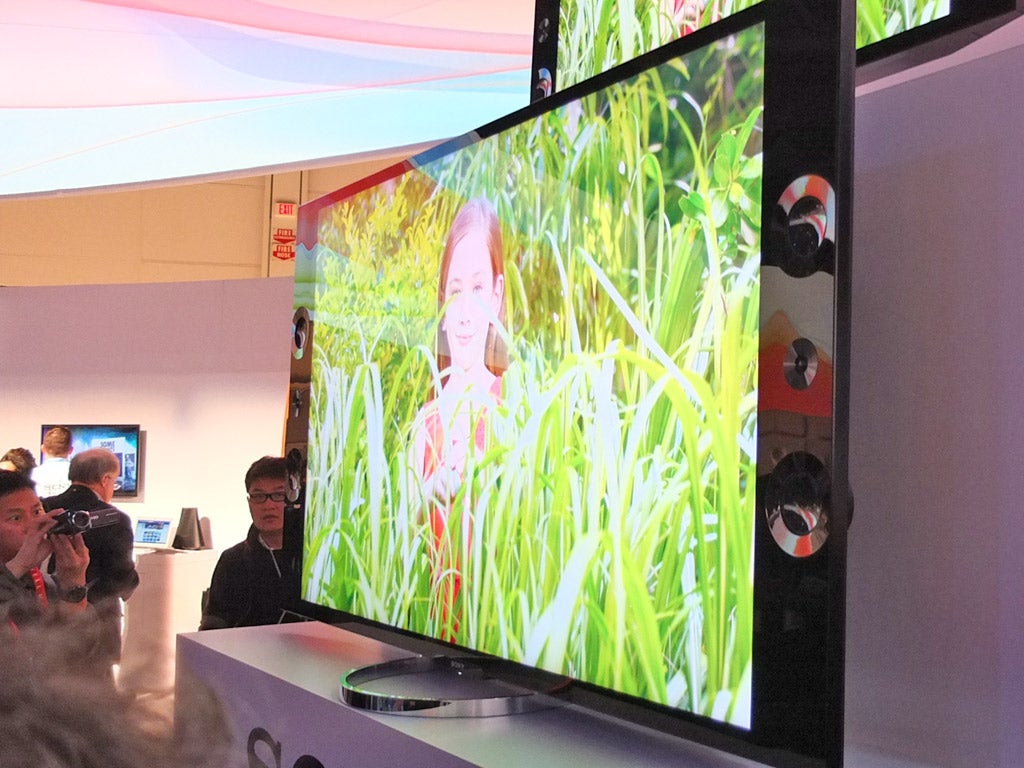Introducing the Sony X9000A 4K 65in TV
David Phelan goggles at Sony’s new box

Your support helps us to tell the story
From reproductive rights to climate change to Big Tech, The Independent is on the ground when the story is developing. Whether it's investigating the financials of Elon Musk's pro-Trump PAC or producing our latest documentary, 'The A Word', which shines a light on the American women fighting for reproductive rights, we know how important it is to parse out the facts from the messaging.
At such a critical moment in US history, we need reporters on the ground. Your donation allows us to keep sending journalists to speak to both sides of the story.
The Independent is trusted by Americans across the entire political spectrum. And unlike many other quality news outlets, we choose not to lock Americans out of our reporting and analysis with paywalls. We believe quality journalism should be available to everyone, paid for by those who can afford it.
Your support makes all the difference.As you’ll know by now, 4K or Ultra High Definition as some manufacturers call it, is the coming thing in TV. It means resolution that’s four times current Full HD. So instead of 1920 x 1080 pixels, it manages 3840 x 2160 – that’s over 8 million pixels in total.
It is picture quality that has to be seen to be fully appreciated and has a level of realism that the screen makes you feel you’re simply looking through a window. More so if there’s landscape on screen, less so if you’re watching 2001: A Space Odyssey.
Anyway, this is technology you can buy today. There are several models in the shops, one from Sony, one from LG. Both cost well over £20,000.
In other words, it’s very pricey and that size is way too big for most living rooms.
Sony is the first company to solve this problem, which it’s done by introducing smaller screen sizes. Its 55in and 65in X9000A 4K TVs – on display at the Consumer Electronics Show last week in Las Vegas – will be available by the summer, at considerably lower prices. Though they still won’t be cheap.
After all, this is amazing tech that is instantly recognisable as being leagues ahead of everything we have at the moment. Blockbuster movies are shot in 4K, so they’ll look particularly impressive on these screens.
Because that’s the other problem with 4K: there’s no content available. It exists (movies shot on 35mm film offer higher resolution than 4K and merely need to be converted to the digital format) but there’s no easy way to deliver it. Blu-ray and DVD have much lower resolutions and capacities that are too small, so they won’t do.
Sony seems to have addressed this issue, too. At the launch of the X9000A TVs, Sony announced that it would provide customers with access to seven 4K movies on “the world’s first 4K Ultra HD delivery solution complete with pre-loaded native 4K entertainment” according to the company.
This uses the 4K Ultra HD Video Player, which might mean supplying customers with a server or some kind of download system (though you’d better make sure you don’t have a download cap on your broadband).
On the other hand, there’s always upscaling. That’s where lower-resolution images are made to look better. This is often pretty dodgy, but the chip in the 84in Sony TV is astonishingly good. In behind-closed-doors demonstrations, Sony’s engineers showed upscaled pictures which were almost indistinguishable from native 4K content. Expect the 55in and 65in models to have upscalers to match.
This quality of upscaling is essential as nearly everything you’ll watch will be at lower resolution. Sony’s image processing has been consistently masterful over the years, so expectations are high.
Sound on the Sony TVs should also be much richer than on most flatscreens thanks to the large side-mounted speakers (though they do require a bit more living room space).
The truth is that in 10 years’ time we may well all be watching 4K TV just as often as we now see HD content. But we’re not there yet. Still, if you’d like to see the highest-resolution picture available, these TVs will be worth saving up for.
Join our commenting forum
Join thought-provoking conversations, follow other Independent readers and see their replies
Comments